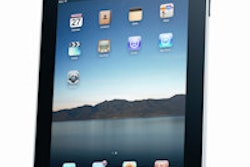RIS/PACS developer Brit Systems has released WebWorks 3D and the WebWorks QC module for its WebWorks image browser at RSNA 2014.
WebWorks 3D is an optional add-in tool that enables viewing a 3D rendering that can be rotated. It also includes maximum intensity projections (MIPs) and multiplanar reconstructions (MPRs), magnification, cross-reference and locate tools, measurement tools, and snapshot tools so an image can be saved as DICOM to the server for others to view.
WebWorks provides browser-based viewing to any DICOM-capable PACS and vendor-neutral archive (VNA), supports federating time lines across multiple DICOM servers, and can be made available via URLs from within electronic medical records, Brit Systems said.
The firm also released WebWorks QC, an optional module that provides advanced study quality control (QC) functionality. It returns results via the emerging Image Object Change Management (IOCM) standard and allows changes to studies to be made in one place with the results automatically returned to multiple servers, such as to a PACS and a VNA, keeping them synchronized, Brit said.
The module allows technologists to correct studies from anywhere they can access a browser. QC worklists can be shared among multiple technologists and once a study is quality-controlled, it can be returned to all servers that store a copy via the emerging IOCM standard.
WebWorks QC supports matching an order with a study, deleting images, rearranging images and series, and moving images from one study and/or patient to another, all via a drag-and-drop interface. The original patient information is stored within the image, and the original study can be restored at any point in time from within the QC server. Users can anonymize and edit studies to use them as a training aid in teaching and research. The QC's server can also act as the browser-based viewer, making the study available anywhere.



















